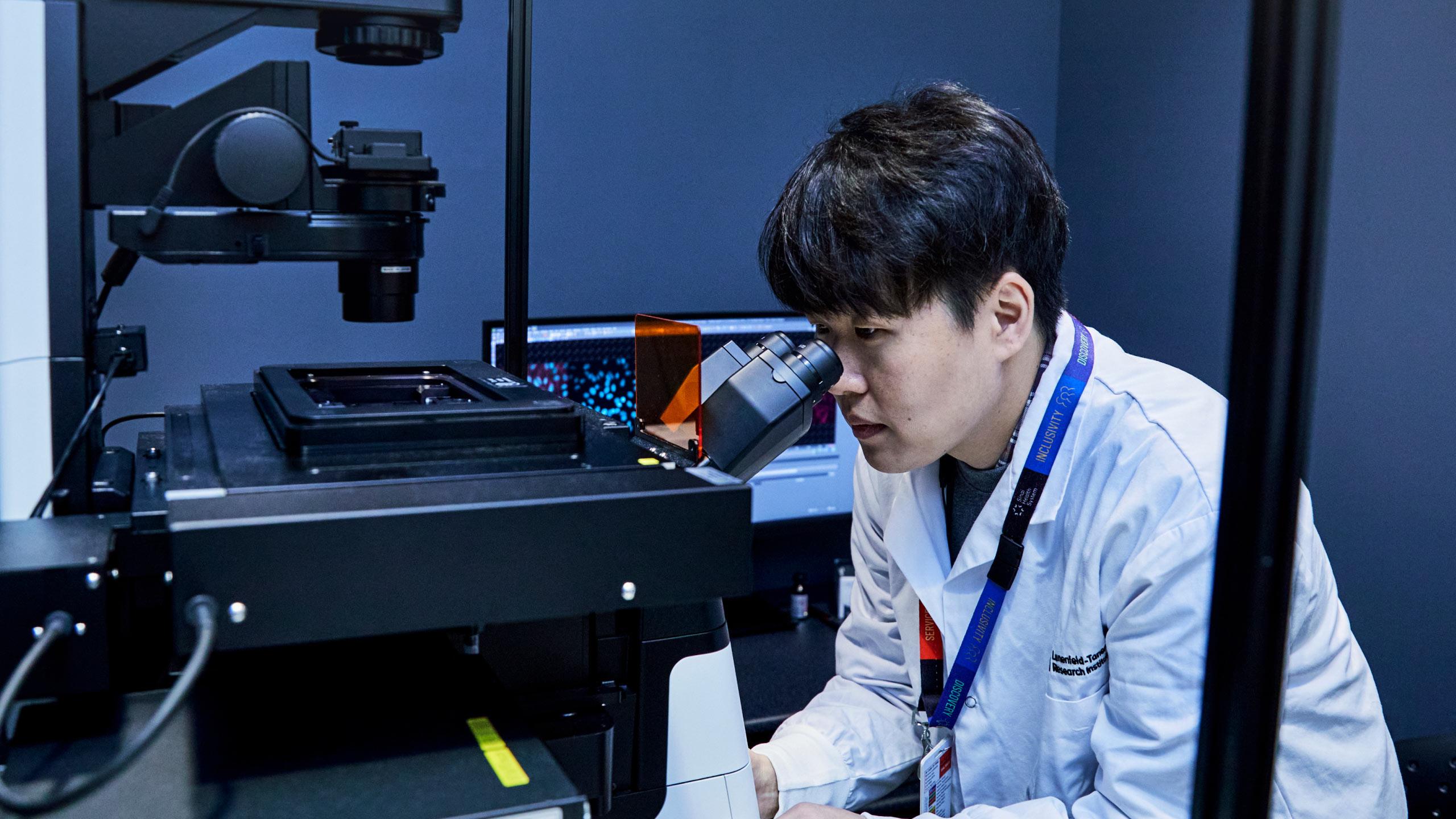Soft Tissue Sarcoma
Learn more about soft tissue sarcoma and how it is treated.
Overview
Soft tissue sarcoma is a type of cancer that begins in the soft tissues of the body.
Soft tissues include muscles, blood vessels, lymph vessels, fat and nerves. They surround the organs and connect and support the other tissues in the body.
Soft tissue sarcomas can begin anywhere in the body, but they most often affect the arms, legs or trunk. They can also appear in the stomach or intestines, behind the abdominal cavity (retroperitoneal sarcoma) and in the female reproductive system.
Types of soft tissue sarcoma
There are more than 100 different types of soft-tissue sarcoma. The following types are the most common.
Undifferentiated pleomorphic sarcoma (UPS)
Undifferentiated pleomorphic sarcoma (UPS) can occur anywhere in the body. It is usually found in the arms, legs (especially in the thighs) and behind the abdominal cavity (retroperitoneum).
These tumours often grow rapidly and can spread to other parts of the body, including the lungs.
Myxofibrosarcoma (MFS)
Myxofibrosarcoma (MFS) can occur anywhere in the body. It is usually found in the arms and legs (especially in the thighs).
Leiomyosarcoma
Leiomyosarcoma affects smooth muscle tissue and is usually found in the abdomen. It most often begins in the uterus, but it can also form in the bladder and stomach.
Leiomyosarcoma can also affect large blood vessels, such as the inferior vena cava and the pulmonary artery.
Liposarcoma
Liposarcoma is a sarcoma that starts in the fatty tissues. It usually occurs in the fat in the arms, legs or abdomen. There are many different sub types of liposarcoma and some of those are more aggressive than others.
Gastrointestinal stromal tumour (GIST)
GISTs start from special nerve cells that exist in the wall of the stomach and other digestive organs. These cells send signals to your muscles to help move food through the digestive system.
When these cells grow and divide too quickly, they can form a tumour. Not all GISTs are cancerous.
Diagnosis
There are several tests used to diagnose soft tissue sarcoma. More than one test is often needed to make an accurate diagnosis.
X-ray
X-rays use a type of radiation called electromagnetic waves to create images of your bones and other structures inside the body. These images help physicians see if there are any abnormalities.
Computed tomography (CT) scans
A CT scan takes pictures of the inside of the body using X-rays from different angles. A computer combines these images into a cross-sectional picture that makes it easier to see if there are any abnormalities or tumours.
CT scan images provide more detailed information than regular X-rays.
Magnetic resonance imaging (MRI)
MRIs use magnet and radio waves to create pictures of your anatomy, including muscles, fat and other soft tissues in your body. This helps physicians see if there are any abnormalities, and if present, the helps determine the size of the mass and what structures are affected.
Positron emission tomography (PET) scan
PET scans are used to look for abnormalities. A very small amount of radioactive substance is injected into your veins. These substances are called tracers.
After being injected with the tracer, you lie down on the PET scanner. The PET scanner creates an image of the inside of your body. Changing cells absorb more of the tracer substance, which makes it easier for physicians to see if there are any abnormalities.
Biopsy
If your imaging test suggests that cancer is present, we need to take a biopsy to make a definite diagnosis. During a biopsy, a physician removes a small amount of tissue so it can be examined under a microscope and analyzed by a pathologist.
A pathologist is a physician who specializes in interpreting laboratory tests and evaluating cells, tissues, and organs to diagnose disease.
Soft tissue sarcomas are uncommon and there are many different types. In order to ensure the appropriate diagnosis, your tissue sample will be reviewed by an expert pathologist or specialist. This expert will have extensive experience diagnosing soft tissue sarcoma.
Treatment
Our sarcoma care team will work with you develop a treatment plan that is specific to your needs.
Your treatment options will depend on factors such as the type and stage of your cancer.
We also consider possible side effects, your overall health and your personal preferences. Part of your treatment may focus on cancer symptoms and side effects of treatment that affect your quality of life.
We may recommend one or more of the following treatments.
Surgery
Surgery is the most common treatment for soft tissue sarcomas. Surgical oncologists and orthopaedic surgeons are physicians who specialize in treating soft tissue sarcoma with surgery.
A surgeon will try to remove the tumour and some of the healthy tissue around the tumour. This helps remove all the cancer cells.
High-grade soft tissue sarcomas that are larger than two inches (five centimetres) are usually treated with a combination of surgery and radiation therapy.
You may need radiation therapy before surgery. With some types of soft tissue sarcoma, the tumour may shrink in size, but in most cases it does not. Radiation helps kill cells at the edges of the tumour which helps to make the tumour easier to remove during surgery.
In some instances, chemotherapy may be recommended before surgery. You may also need radiation therapy or chemotherapy after surgery to help remove any remaining cancer cells.
The following types of surgeries may be used to treat soft tissue sarcoma.
Wide excision surgery
During wide excision surgery, a surgeon removes the tumour with a margin of healthy tissue around the tumour to ensure all cancer cells have been removed.
Limb-sparing surgeries
During a limb-sparing surgery, a surgeon removes the tumour from your arm or a leg while preserving nearby vessels and nerves to avoid removing the whole arm or leg.
Reconstructive surgery
You may need to have a large amount of tissue removed when treating soft-tissue sarcoma. If this is the case, a surgeon may use skin grafts or tissue flaps to reconstruct the area afterwards.
Amputation
Amputation is not a common treatment for soft tissue sarcoma. However, it may be the best treatment option in cases where the tumour cannot be completely removed with surgery or when reconstructive surgery is not possible. Amputation may also be necessary if the cancer returns to the same area after limb-sparing surgery.
Chemotherapy
Chemotherapy is prescribed by a medical oncologist, a doctor who specializes in treating cancer with medication. It may be given alone or in combination with surgery and/or radiation therapy.
Radiation
Radiation therapy is prescribed by a radiation oncologist. Radiation is generally given over several consecutive days.
Targeted therapy
Targeted therapy uses medicine to target the proteins and genes in the tumour that cause the cancer to grow.
This medication blocks the growth and spread of cancer cells and limits damage to healthy cells. Your cancer cells may be tested to see if they respond to targeted therapy.
Targeted therapy can be helpful in the treatment of gastrointestinal stromal tumours (GIST).
Immunotherapy
Immunotherapy, also called biologic therapy, is a treatment that uses your immune system to fight the cancer.
Your cancer cells may produce proteins that prevent the immune system from attacking them. Immunotherapy medications interfere with that process to target, improve or restore the functioning of your immune system.








